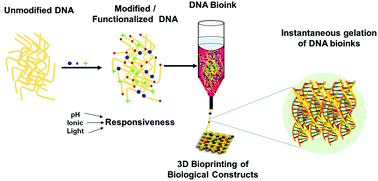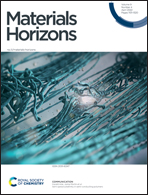Designer DNA biomolecules as a defined biomaterial for 3D bioprinting applications
Abstract
DNA has excellent features such as the presence of functional and targeted molecular recognition motifs, tailorability, multifunctionality, high-precision molecular self-assembly, hydrophilicity, and outstanding biocompatibility. Due to these remarkable features, DNA has emerged as a leading next-generation biomaterial of choice to make hydrogels by self-assembly. In recent times, novel routes for the chemical synthesis of DNA, advances in tailorable designs, and affordable production ways have made DNA as a building block material for various applications. These advanced features have made researchers continuously explore the interesting properties of pure and hybrid DNA for 3D bioprinting and other biomedical applications. This review article highlights the topical advancements in the use of DNA as an ideal bioink for the bioprinting of cell-laden three-dimensional tissue constructs for regenerative medicine applications. Various bioprinting techniques and emerging design approaches such as self-assembly, nucleotide sequence, enzymes, and production cost to use DNA as a bioink for bioprinting applications are described. In addition, various types and properties of DNA hydrogels such as stimuli responsiveness and mechanical properties are discussed. Further, recent progress in the applications of DNA in 3D bioprinting are emphasized. Finally, the current challenges and future perspectives of DNA hydrogels in 3D bioprinting and other biomedical applications are discussed.

- This article is part of the themed collection: Recent Review Articles


 Please wait while we load your content...
Please wait while we load your content...